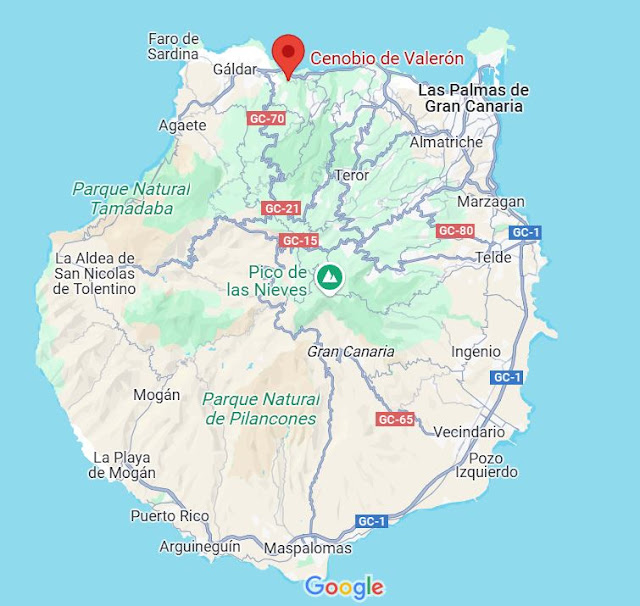Cenobio de Valeron at Santa Maria de Guia, on Gran Canaria, Canary Islands.
This cave complex is known as Cenobio de Valeron or the Valeron Granary. The man made caves are the largest pre-Hispanic collective granary built before Roman times and used by the island’s inhabitants until the conquest of the island at the end of the 15th century.
The site is also known as Valeron’s Monastery. The name monastery comes from the Roman belief that young noble women came here to live until they were married. It was only in the 20th century that an archaeologist realised the real use, as the cavities were similar to those in north Africa etc. The granary is one of Gran Canaria's most iconic archaeological sites.
The caves are located on a steep hill overlooking a steep ravine, and hidden from the sea it was an excellent natural fortress. View of the caves from the road, in the centre of the photo behind the tall rock , and looking back from the site -
Close up of other caves in the hill by the road -
From the ticket office steps lead up the hill and there are various notice boards and panels.


%2020250222.jpg)
%2020250222.jpg)
.jpg)
.jpg)
.jpg)
%20%2020250222.jpg)
%20%2020250222.jpg)
%20.jpg)
%2020250222.jpg)
%2020250222.jpg)
%2020250222.jpg)
.jpg)
.jpg)
.jpg)
.jpg)
.jpg)
%20%2020250222.jpg)
%20%2020250222.jpg)
No comments:
Post a Comment